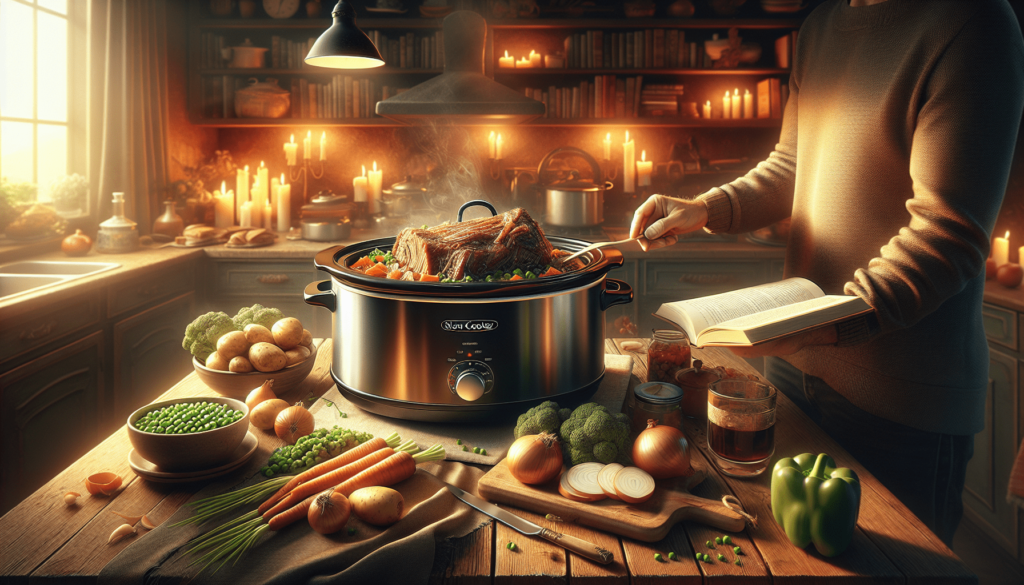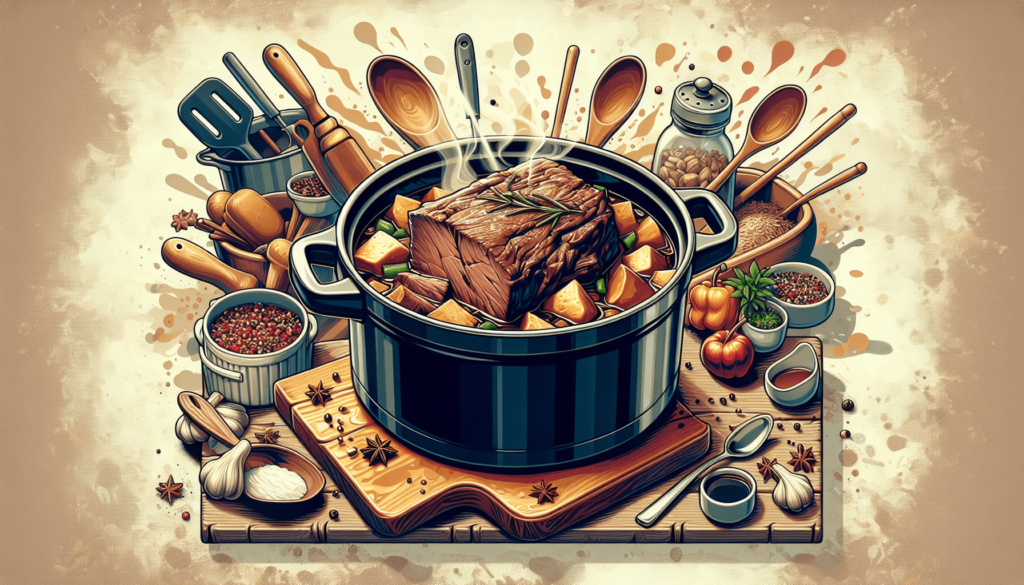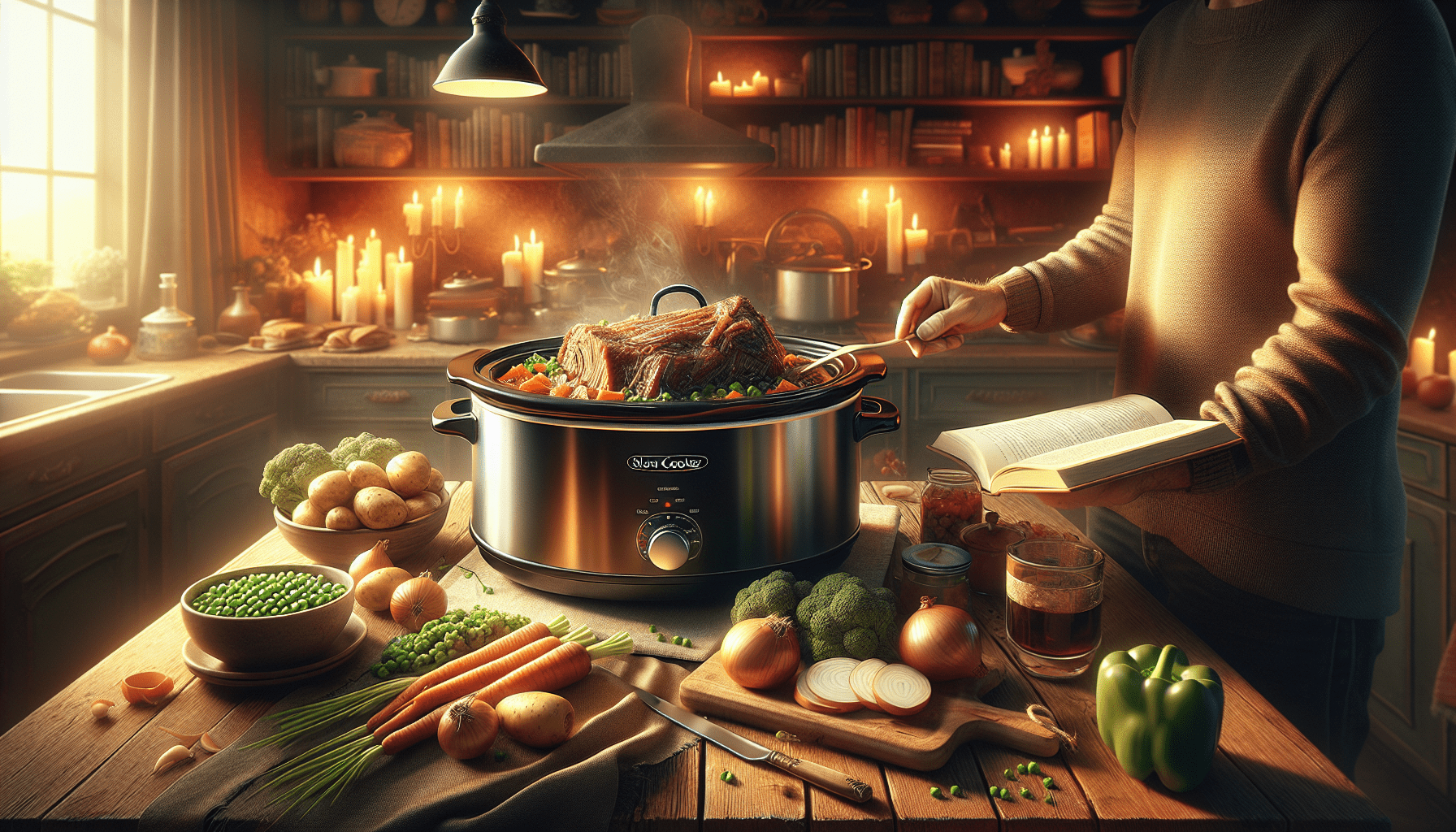If you’ve always been intrigued by the idea of slow cooking but aren’t quite sure where to begin, look no further. In this article, we will guide you on how to use your slow cooker the correct way, ensuring delicious and tender meals every time. Not only that, but we will also highlight the most common mistakes to avoid, helping you become a slow cooking expert in no time. So let’s dive in and discover the secrets to perfecting your slow cooking game!

Choosing the Right Slow Cooker
Consider the Size
When it comes to choosing the right slow cooker for your needs, size matters. Consider how many people you typically cook for and the amount of leftovers you want to have. Slow cookers come in various sizes, from small ones ideal for individuals or couples, to larger ones that can feed a whole family.
Look for Programmable Features
Programmable features can make your slow cooking experience much more convenient. Look for a slow cooker with programmable settings such as timers, delayed start options, and automatic keep warm functions. These features allow you to set your cooking time and temperature in advance, giving you more flexibility and ensuring your meal is ready when you need it.
Check for Removable Inserts
Cleaning up after a delicious slow-cooked meal can be a breeze if your slow cooker has a removable insert. This feature makes it easier to clean and ensures that no food residue is left behind. Additionally, a removable insert can make serving your meal more convenient as you can simply lift it out and transfer the food to a serving dish.
Prepping Ingredients
Trim Excess Fat
Before placing your ingredients in the slow cooker, take a few minutes to trim excess fat from your meat. While slow cooking can help tenderize meat, too much fat can lead to an unpleasant greasiness in your dish. Trimming the fat will not only result in a healthier meal but also a more flavorful one.
Cut Ingredients into Uniform Sizes
To ensure even cooking, it is important to cut your ingredients into uniform sizes. This will help to prevent some pieces from being overcooked while others remain undercooked. Aim for bite-sized pieces that will cook evenly and create a harmonious blend of flavors and textures in your slow-cooked dishes.
Brown Meat Before Slow Cooking
While browning meat before slow cooking is not always necessary, it can add an extra depth of flavor to your dish. When you brown meat, you create a golden crust that enhances both the taste and appearance of your food. This step is particularly important when cooking with tougher cuts of meat as it helps to develop rich, savory flavors.
Layering Ingredients Properly
Place Dense Vegetables on the Bottom
When layering ingredients in your slow cooker, it’s important to consider the cooking time of each component. Dense vegetables such as carrots and potatoes take longer to cook, so placing them at the bottom allows them to be closer to the heat source and ensures they are fully cooked by the end of the cooking process.
Add Meat and Liquid Next
After placing dense vegetables at the bottom, add your meat and liquid next. The meat will benefit from being in direct contact with the heat source, resulting in a more tender and flavorful outcome. The liquid helps to create a delicious, moist environment for your ingredients to cook in.
Top with Delicate Ingredients
Delicate ingredients such as herbs, leafy greens, or quick-cooking vegetables should be added towards the end of the cooking process. Topping your slow cooker with these ingredients preserves their freshness and prevents them from becoming overcooked and losing their vibrant color and texture.
Using the Right Amount of Liquid
Follow the Recipe’s Recommendations
When it comes to adding liquid to your slow cooker, it’s crucial to follow the recipe’s recommendations. The recipe creator has already determined the ideal amount of liquid needed for the particular dish, taking into consideration the ingredients and cooking time. Adding too much or too little liquid can affect the overall taste and texture of your meal.
Don’t Overfill the Slow Cooker
It can be tempting to fill your slow cooker to the brim with ingredients, but this can lead to uneven cooking and potentially spillage. It’s best to leave some room between the top of the ingredients and the lid to allow for proper circulation of heat and moisture. As a general rule, do not exceed the two-thirds mark of your slow cooker’s capacity.
Don’t Add Water When Not Required
Adding water to your slow cooker may seem like a good idea to prevent sticking or to create more liquid, but it is not always necessary. Most slow cooker recipes already account for the amount of liquid needed to achieve the desired consistency. Adding water can dilute the flavors and result in a less flavorful end result.

Choosing the Right Cooking Time and Temperature
Understand Slow Cooker Temperatures
Slow cookers typically have two temperature settings: low and high. The low setting is usually around 200°F (95°C), while the high setting can reach up to 300°F (148°C). Understanding these temperature differences is crucial for achieving the desired tenderness and flavor in your dishes.
Adjust Cooking Time When Converting Recipes
When converting recipes from conventional cooking methods to slow cooking, it’s important to adjust the cooking time. Slow cooking takes longer than traditional cooking methods, so be sure to take this into account to avoid undercooked or overcooked food. As a general guide, a recipe that calls for 1 hour of oven cooking will require approximately 4-6 hours on low or 1-2 hours on high in a slow cooker.
Avoid Cooking on High for Too Long
While the high setting on your slow cooker can cook food faster, it is important to avoid cooking on high for too long. Extended high-temperature cooking can result in dry, overcooked meat and vegetables. It’s generally recommended to use the low setting for most slow cooker recipes to achieve tender and flavorful results.
Avoiding Early Stirring
Resist the Temptation to Stir Frequently
One of the benefits of slow cooking is the ability to set it and forget it. It’s important to resist the temptation to constantly stir your ingredients during the cooking process. Slow cookers rely on the moisture and heat trapped inside to work their magic, and frequent stirring can disrupt this process and affect the overall cooking time and texture of your dish.
Stirring May Affect Cooking Time
Each time you lift the lid and stir your ingredients, you release valuable heat and moisture from the slow cooker. This can extend the cooking time and result in unevenly cooked food. To ensure even cooking and achieve the desired tenderness, it’s best to let your slow cooker do its job without unnecessary interruptions.
Only Stir at the Appropriate Time
While it’s important to avoid early stirring, there are some recipes that actually require stirring at specific times. Typically, this is done towards the end of the cooking process to distribute flavors or thicken sauces. Follow the recipe instructions for any required stirring, but remember to minimize any additional stirring that is not necessary.
Avoiding Frequent Lid Opening
Each Lid Opening Adds Significant Cooking Time
Every time you open the lid of your slow cooker, you allow heat and moisture to escape. This can significantly increase the cooking time as the slow cooker needs time to regain the lost heat and maintain the desired temperature. To avoid unnecessary delays in your cooking process, resist the urge to constantly check on your food by opening the lid.
Keep the Lid Closed When Not Necessary
Unless specifically mentioned in the recipe, it’s best to keep the lid of your slow cooker closed throughout the cooking process. The lid helps to trap heat and moisture, creating a controlled environment that allows your ingredients to slowly and evenly cook. Let your slow cooker work its magic without unnecessary interruptions.
Check on the Recipe Through the Lid Vent
If you need to check on the progress of your dish without fully opening the lid, many slow cookers come with a vented lid. This vent allows you to peek inside and assess the cooking status without releasing too much heat or moisture. Utilize this feature when necessary, but be mindful not to leave the vent open for an extended period as it may affect the overall cooking process.
Handling Ingredients Safely
Thaw Meat Thoroughly Before Cooking
When using meat in your slow cooker, it’s essential to thaw it thoroughly before cooking. Frozen meat takes significantly longer to reach a safe internal temperature, potentially resulting in an increased risk of foodborne illnesses. Always ensure your meat is completely thawed before adding it to the slow cooker for safe and delicious results.
Refrigerate Leftovers Promptly
Leftovers from your slow cooked meal should be refrigerated promptly to prevent bacterial growth. Slow cookers tend to maintain a constant low temperature, which is not sufficient to keep food out of the danger zone (40°F – 140°F or 4°C – 60°C). Divide your leftovers into shallow containers and refrigerate them within two hours of cooking to ensure food safety.
Avoid Leaving Food in the Slow Cooker for Too Long
While slow cookers are designed to keep food warm, leaving food in the slow cooker for a prolonged period can lead to a decline in food quality and safety. If you’re not planning to serve the food immediately after cooking, transfer it to another container and refrigerate it promptly. Slow cookers are not meant for long-term food storage.
Proper Cleaning and Maintenance
Unplug the Slow Cooker Before Cleaning
Before you begin the cleaning process, always remember to unplug your slow cooker. This ensures your safety and prevents any accidents while handling water and cleaning agents near electrical components. Safety should always be a priority when dealing with any kitchen appliances.
Allow It to Cool Down Before Cleaning
To avoid burns and accidents, allow your slow cooker to cool down before cleaning it. The heating elements and surfaces can remain hot even after cooking, so it’s best to give it enough time to cool before you start the cleaning process. This will also prevent any damage to the appliance or potential warping of the insert if exposed to sudden temperature changes.
Clean the Lid and Insert Thoroughly
Cleaning the lid and insert of your slow cooker properly is essential to maintain its longevity and ensure the integrity of your meals. Most slow cooker lids and inserts are dishwasher safe, but it’s always a good idea to check the manufacturer’s instructions. If not dishwasher safe, wash them in warm, soapy water, using a sponge or cloth to remove any food residue. Rinse thoroughly and dry completely before storing.
Experimenting and Adapting Recipes
Follow Basic Slow Cooker Conversion Guidelines
When trying out new recipes or adapting existing ones for your slow cooker, it’s helpful to follow basic slow cooker conversion guidelines. As mentioned earlier, slow cooking takes longer than other cooking methods, so it’s important to adjust the cooking time and temperature accordingly. Start by converting recipes that have a similar ingredient composition and adjust as needed based on your slow cooker’s performance.
Make Adjustments Based on Your Slow Cooker
Every slow cooker is slightly different, so it’s important to understand how your specific model performs. Pay attention to how quickly or slowly your slow cooker heats up and its temperature consistency. This knowledge will help you make any necessary adjustments to the cooking time and temperature settings to achieve the best results.
Try New Ingredients and Flavors
One of the joys of slow cooking is the ability to experiment with different ingredients and flavors. Don’t be afraid to try new things and explore various cuisines in your slow cooker. Whether it’s adding spices, herbs, or unique ingredients, slow cooking allows flavors to meld together beautifully, creating delicious and comforting meals. Expand your culinary horizons and have fun discovering new favorites.
By considering the size, programmable features, and removable inserts of your slow cooker, you can ensure a convenient and efficient cooking experience. Properly prepping ingredients, layering them correctly, and using the right amount of liquid will result in delicious meals. Choosing the right cooking time and temperature, avoiding early stirring and frequent lid opening, and handling ingredients safely are all essential steps for successful slow cooking. Finally, maintaining your slow cooker through proper cleaning and maintenance and being open to experimenting and adapting recipes will allow you to make the most of this versatile appliance. So dust off your slow cooker, follow these tips, and get ready to enjoy flavorful and tender meals with minimal effort. Happy slow cooking!
